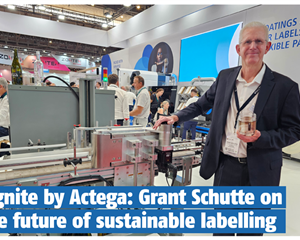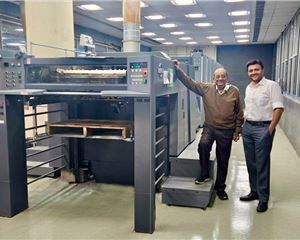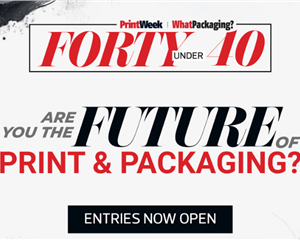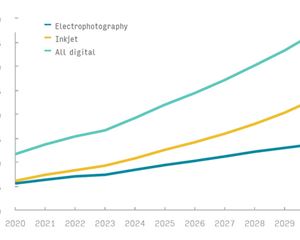What we can learn from Rollatainers - The Noel D'Cunha Sunday Column
Rollatainers, it appears, is selling its packaging division, which includes carton and flexible manufacturing. From a high of Rs 560 crore in 2013-14 the revenue fell to Rs 86.7 crore in 2015-16. The profits too plunged from Rs 28.4 crore to Rs 5.6 crore.
Are more players who are joining the packaging bandwagon intensifying the competition?
Is it the cause for falling profits?
Is the packaging segment nearing saturation?
This Sunday Column is an interesting compilation o
22 Jul 2016 | By Noel D'Cunha
Amar Chhajed, Webtech, Mumbai
I would agree that the Rollatainers case has to do with the intensification of competition leading to a fall in profitability. But there surely is a high level of saturation in the general packaging business. There, however, are better prospects only for innovative and sustainable packaging concepts.
Arnab Maiti, Kodak India, Mumbai
I would not jump to the conclusion that there's something wrong with the packaging segment. There are problems with few companies, because they do not take enough steps to revamp the company. These are purely my personal observations.
Chandresh Haria, Pragati, Hyderabad
I don't think so, there is enough work for people who do premium and decent work, and not compromise with their costing.
Denver Annunciation, Janus International, Thane
1. Costing and profitability. As printers, our costs are based on what the competition is supplying and not based on our costs. Most printers estimate a cost but when it comes to final price it's based on what the competition is offering.
2. Gearing. Heavy loans and very high debt-equity ratio make printers desperate. This leads to abnormal pricing or pricing just to keep the equipment running or service the debt.
3. Easy availability of funding without additional collateral. This lowers the entry barrier and brings in players with nothing to lose.
4. No focus on efficiency. A lot of companies focus only on cost cutting. Cost cutting after some time is not feasible and can lead to other problems like rejections. We also need to focus on efficiency. Efficiency is also a method of cost reduction.
5. Global profitability. Globally the profitability in the print industry has dropped to 2% and this is leading to a lot of consolidation. There are definitely tough times ahead.
6. Need to grow the market. A strategy forward would be to grow the market rather than just fight for the existing business.
7. Print associations along with vendors need to now play an active role in educating new entrants on a lot of things, pricing is one of the things. Vendors should not support printers who indulge in rampant cost cutting.
LMAI has taken a lot of efforts to educate printers on pricing and also efforts are on to "save the industry". It is necessary that all associations do this and vendors also educate and support. At the end of the day, the shutting of a business is a loss to vendors, too.
Dev Nair, Kohinoor Printers, Mumbai
Whilst I am not into packaging per se and perhaps would not be the best person to respond to your specific query, my view is that there is a significant churn that is already happening in the packaging segment which is impacting the overall well-being of the industry.The contradiction to all of this is that at the other end, one keeps hearing about printers expanding their capacities and purchasing the latest technologies both in the printing and post-printing areas. This is surely a disconnect of sorts.
Again my view is that the larger-sized printers with their larger scale of operations and capacities and greater efficiencies are now engaging the end customers to their advantage and entering segments that they were never present in earlier. All this at the cost of the mid-size printers, who have begun to face pricing pressures consequent to which drop in volumes and shrinking margins. So whilst the large printers will get bigger, the very small printers would not be impacted. It would be the mid-sized printing houses that will either have to scale up significantly or then face the consequences of this competitive pressure.
Whichever way, it is going to be a very challenging and interesting phase going forward as the industry gears and reshapes itself.
From such a restructuring process would rise a stronger and better equipped industry that would then be on equal footing with the end customers.
Faheem Agboatwala, Hi-Tech Printing Services, Mumbai
I don't think so. Yes, several commercial players have jumped on the packaging bandwagon but that is not the reason why the packaging guys are in a mess.I think it's more to do with the rat race.
Most packaging converters are after top line growth without thinking and considering EBITDA.
Further investments are being done on gut feel rather than an in-depth study.
Till such time as packaging firms don't do scientific costing based on their investments, this trend will continue.
Bad for the market in general for the short term, but good for serious, focused players in the long term.
Fred Poonawala, Comart, Mumbai
I don't think a company so large as Rollatainers can down scale so much yet show such high profit, unless they have reduced staff drastically or sold property to show profit.It's still a good company to buy if it shows such high profit, presuming all profit is from the packaging printing jobs.
Gaurav Sathaye, United Inks & Varnish, Mumbai
If you ask me, I still consider packaging is one of the segments in printing industry which is growing. I personally do not think that Rollatainers determines whether the industry is growing or not. Their situation may be driven due to internal reasons or the way the business was done.
Harveer Sahni, Weldon Celloplast, New Delhi
What did one see at Drupa! Parksons, TCPL, Any Graphics, Manohar Packaging, Nutech, Huhtamaki, etc. all buying new equipment and expanding. How can the segment saturate and go down when the literate population in the country is on the rise and demand growing. It may be a case of management not tightening their belts to fight competition by producing to economies of scale and cutting down on overheads. Today, everything matters; location, automation, manpower, taxation, logistics and so on.Wastages and slower old equipment is another big cause of not being able to meet competition.
Jayant Pardiwala, Nippon Color, Mumbai
Ha...ha. Yeh to hona hi tha.Every commercial printer wants to become a packaging printer. Packaging printing market is also becoming too competitive.
Kapil Roongta, Okay Paper Products, Mumbai
Hmm.. I am not so connected to comment on Rollatainers, but yes the competition is growing, is getting brutal and naked.
Kiran Prayagi, Print Consultant, Mumbai
Must be some other reason. This big drop in revenue indicates something else.
KS Murthy, Toyo Ink, Noida
I disagree that packaging market is getting saturated. The market is growing. It is important to be competitive and efficient to be in the race. Else you will out the game.
Manoj Mehta, Mumbai
You are right to some extent. Flexible packaging is taking over major shift. Innovations in flexible packaging is at peak worldwide.Food is a key indicator of changing lifestyles and the current trends driving innovation in developed economies are convenience and health-consciousness, resulting in significant changes on supermarket shelves. The share of flexible food packaging takes up 77% of the total packaging market.
Worldwide, innovations are happening in packaging technology with a ‘touch of greenness” and an accent on sustainability and recyclability.
Nihar Desai, Hi Scan, Ahmedabad
The competition has definitely intensified and it is affecting the profits. Now the companies need to focus on micro-management to save costs. This being said the packaging sector is growing in India and there is the market to be tapped.
Nilesh Todi, Canpac Trends, Ahmedabad
Good question... Every business has two sides. Efficiency and innovation is the only key to sustain. We find lot of scope and have planned large expansion.
Niraj Darji, Astron Packaging, Ahmedabad
I don’t think there’s a saturation in the packaging market.In 2007, packaging growth was just 2% and all the packaging companies were just producing regular boxes, match the specifications and prices with the competitors and execute the jobs. The packaging today is growing at a much higher rate, but by matching specification and prices, no company will grow.
If you see today, 60% of the industry runs machines only half the time or perhaps little more than that. That’s no way of growing. One has to optimise the machine buy.
Each of our investments, be it labels or corrugation, has always targeted new markets – both at the domestic and international levels. In 2014, we took our exports share to over Rs 10-crore. Overall, we are growing at more than 30% per annum and will continue to grow year by year on the back of new markets.
 |












 See All
See All